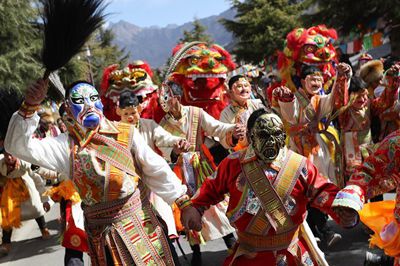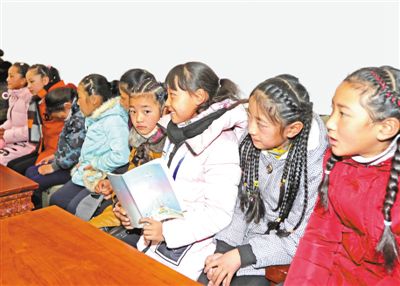|
The 1959 democratic reform brought unprecedented changes to the growth pattern of the population of Tibet, as a result of the ensuing economic development and improved medical services. First, in the less than 60 years from the peaceful liberation of Tibet in 1951 to 2008 the total population of Tibet increased from 1,228,000 in 1959 to 2,870,800 in 2008, and the population of the Tibetans increased from one million to 2.7 million. The family planning policy widely adopted in inland areas is not implemented in the vast farming and pastoral areas of Tibet. According to a sample survey, conducted by relevant statistical organization, of 1% of the resident population in Tibet, the annual growth rate of the local resident population for the past ten years has remained above 10,[12] far exceeding the national average. In contrast, during the two centuries before the democratic reform, the total population of Tibet increased by a mere 58,000, and the Tibetan population practically stopped growing. Second, average life expectancy is an important index of human development. The current average life expectancy in Tibet is 67 years, as shown in Fig. 11. In contrast, the figure was only 35.5 in old Tibet. Third, the mortality rate of population in Tibet has dropped significantly. The average mortality rate before the democratic reform was a stunning 28, and those of women and children-two vulnerable groups-were even higher, at 50 and 430, respectively. Currently the mortality rate of pregnant women and women giving birth has dropped from 50 in the early 1950s to 3.1 in 2007, and infant mortality rate has dropped from 430 to 24.5 in the same period (see Fig. 11).
It can be concluded from the above that the population of Tibet has undergone a change in its development pattern. Old Tibet experienced two highs and two lows in population development -- "high birth rate and death rate, and low life expectancy and growth rate." In contrast, Tibet today sees a comparatively high birth rate and life expectancy, low mortality rate, and a steady growth in population. It is also clear that the assertion that "local Tibetan people are becoming a minority due to a large inflow of Han people into the region," made by some international non-governmental organizations and individuals, is a false assumption contrary to the facts. |
- Home
- News |Tibet |Exclusive |China |World |Other Tibetan-Inhabited Area |Tibet through the Eyes of Foreigners |Related News
- Documents |White Papers |Others
- Photo |Politics |Economy & Society |Culture & Religion |Human & Nature |Beautiful Tibet |Other Tibetan-Inhabited Area |Exchanges |Related
- Video |News |Documentary |Micro-Video |Entertainment
- Art
- Tourism
- In Focus
- About Tibet







